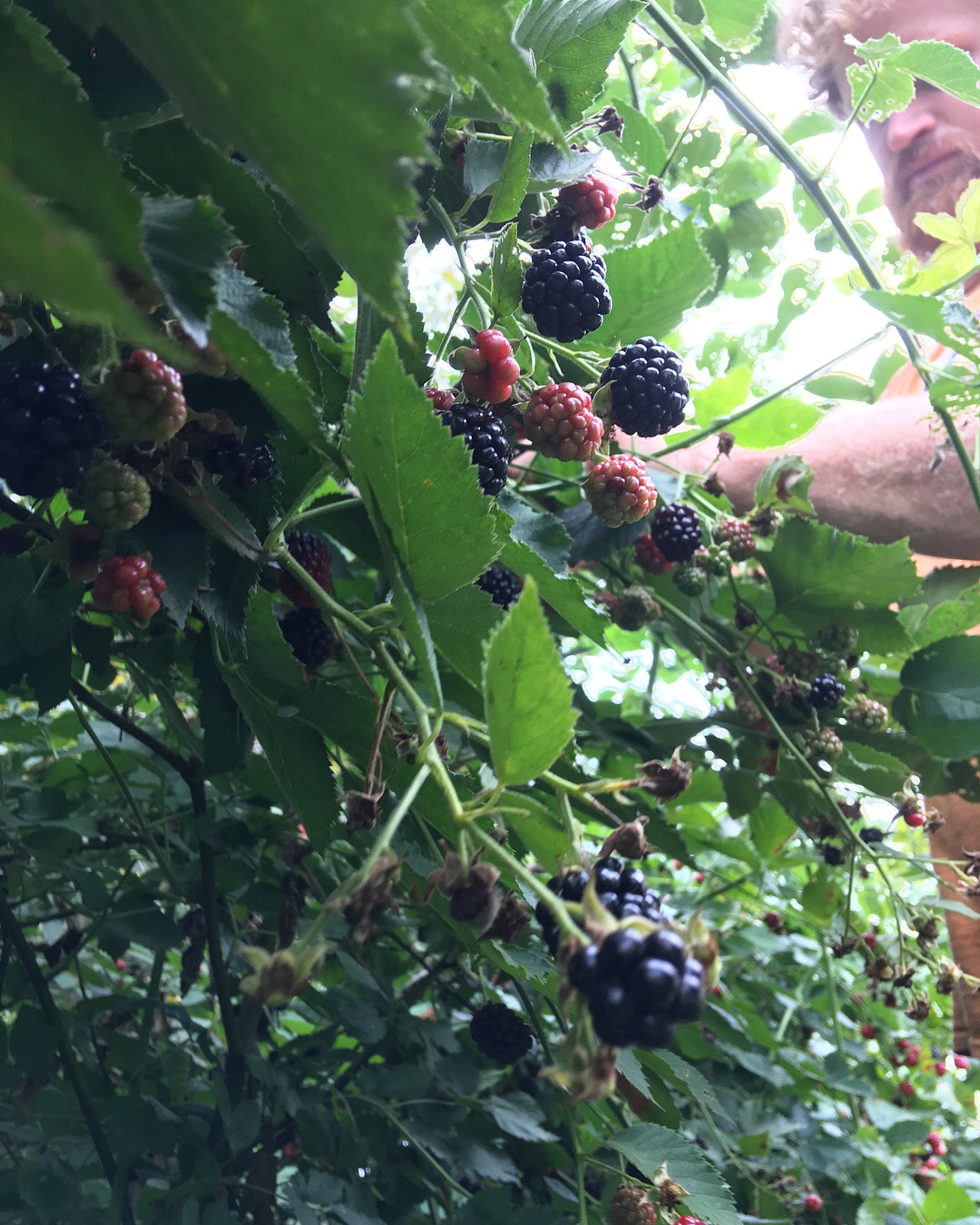Blackberry


Blackberry
Rumus fruticosus
Plant for summer picking, for jams and wines, for a garden hedge, and for a shady streambank berry!
Hardy from Zones 5-10. Arching stems can be 6 feet long. Self-fertile.
1 Order is a Bundle of 5 Plants.
Blackberries aren’t technically fruits. They’re botanically known as aggregrates of small drupelets. That interesting distinction is also completely irrelevant when you’re picking brambles in the summertime and your fingers are dripping with black-blue dye! At least, we rarely think about the technical fruitiness, just the tasty fruitiness. We fill baskets and jars with large berries and freeze them for winter or turn them into jams, wine, or cordials. The fruit (or aggregated drupelets, if you want to get precise about it) are high in Vitamins C and K with healthy portions of dietary fiber and salicylic acid, which might offer some protection against heart disease. Blackberries have considerable amounts of ellagic acid, which acts as an antioxidant, which seems to reduce the risk of cancer. The deep color comes from anthocyanin, an aid of vision and circulation that regulates diabetes and enhances memory and motor skills. The seeds in each drupelet are loaded with protein and oils containing omega-3 and omega-6 fats. We feel pretty good after eating lots of them.
Folks have been eating Blackberry for thousands of years, blurring the line between foraging and farming. The plant likes well-drained moist soils in full shade, light shade, or no shade. Take your pick. In their first season Blackberry grows tall arching primocanes, which turn into floricanes with flowering buds in the second season. Those arching tips easily root themselves when they touch soil and quickly crawl into a bramble thicket. Shoots usually have bitingly sharp thorns, which is why people often come back from Blackberry patches with shredded clothes and black-blue and blood-red-stained hands. However, clever botanists have bred thornless varieties as well as cultivars that produce on the primocane, like their Everbearing Red Raspberry cousins. Lots of critters like munching on the berries, and the leaves are favored by caterpillars and deer, but also as a tea for upset stomachs and lowering blood sugar. For thousands of years people have chewed on the leaves when they have bleeding gums.
We propagate Chester, a winter-hardy thornless variety with very abundant very large fruit ripening in July. This cane-blight resistant cultivar became commercially available in 1985, the produce of a collaborative breeding effort by several university programs. We grow our thornless Blackberries from dividing and tip-layering. Canes are very vigorous and might need trellising to support them, or annual pruning. Each order includes 5 plants.